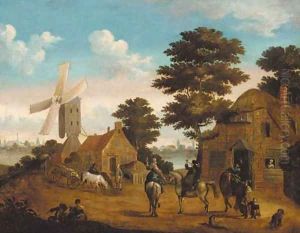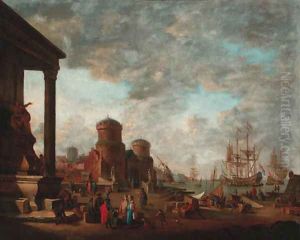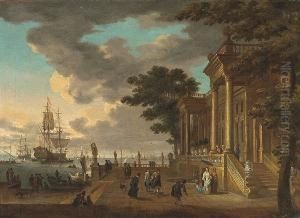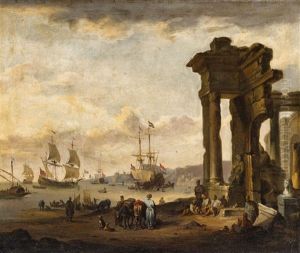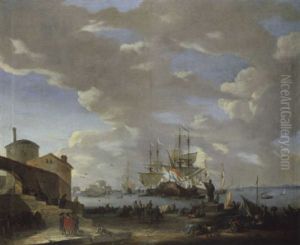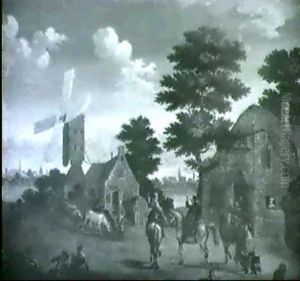Johann Georg Stuhr Paintings
Johann Georg Stuhr was a notable figure in the world of art, born in 1650 and passing away in 1712. Although not as widely recognized as some of his contemporaries, Stuhr’s contributions to the art world during the late 17th and early 18th centuries were significant, particularly in the realms of painting and engraving. His work is often characterized by the Baroque style, which was predominant in Europe during his lifetime. This period was known for its dramatic use of light and shadow, elaborate ornamentation, and a focus on dynamic movement and emotional intensity in art.
Originating from Germany, Stuhr’s early life and education in art remain somewhat obscure, a common issue for many artists of his time due to the limited documentation. However, it is known that he worked primarily in his homeland, contributing to the rich tapestry of Baroque art in the German states. His art reflects the broader European Baroque movement, yet it also possesses unique qualities that distinguish his work from that of his peers.
Throughout his career, Johann Georg Stuhr created works that ranged from religious themes, which were prevalent in the Baroque era, to portraits and landscapes. His religious works, in particular, are noted for their intensity and emotional depth, aligning with the Baroque period’s emphasis on expressing the spiritual and the sublime. Stuhr’s landscapes and portraits, meanwhile, showcase his versatility as an artist and his ability to capture the essence of his subject matter with both realism and a sense of drama.
Despite his contributions to the art world, Stuhr did not gain the same level of fame as some of his contemporaries, such as Rembrandt or Rubens. His legacy, however, is preserved in various European art collections, where his works continue to be studied and admired for their technical skill and emotional resonance. Stuhr’s death in 1712 marked the end of a career that, while not broadly celebrated in the annals of art history, remains an important part of the study of Baroque art and its development in Germany and beyond.

